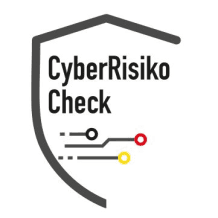What is the SABSA Framework?
SABSA (Sherwood Applied Business Security Architecture) is a proven framework for developing security architecture and solutions for enterprises. Originally developed in the 1990s, it aims to realize security strategies, plans, and solutions that are directly tied to the business requirements of an organization.
SABSA encompasses six layers of architecture, ranging from business strategy to operational security operations. These layers are:
- Contextual Security (Business Analysis)
- Conceptual Security (Architecture Design)
- Logical Security (Design)
- Physical Security (Implementation)
- Component-based Security (Detailed Design)
- Operational Security (Management and Operation)
Typical Use Cases of the SABSA Framework
SABSA is used in various sectors and for different security initiatives:
Development of Security Strategies: It helps organizations define security objectives that support their business goals.
Security Architecture: Provides a structured approach to developing synergistic security solutions across technical silos.
Risk Management: Identifies and mitigates business risks by linking security requirements to business needs.
Compliance: Assists organizations in meeting regulatory requirements by ensuring that security practices and protocols comply with applicable standards.
Why Use SABSA?
SABSA offers several advantages that make it a preferred choice for structuring security measures in enterprises:
Business-Oriented: While many security frameworks are purely technology-focused, SABSA integrates security directly with business requirements.
Flexible and Adaptable: It can be tailored to any business model, regardless of industry or size.
Holistic Approach: SABSA addresses not only technological security aspects but also organizational and procedural measures.
Implementation of the SABSA Framework
Implementing SABSA requires a thorough understanding of the business and technical requirements of the organization:
Analysis of Business Requirements: Identify the strategic security objectives of the organization.
Architecture Development: Develop security strategies and solutions that support these objectives.
Security Design: Technical security measures tailored to the specific needs of the organization.
Implementation: Physical and logical security measures are put in place.
Operation: Ongoing management and compliance with security standards.
Protective Measures with SABSA
Security measures are an integral part of the SABSA Framework and include the following key areas:
Regular Review of Security Strategy: Ensure that policies and practices remain relevant and effective.
Continuous Risk Monitoring Process: By continually assessing the risk situation, the organization remains responsive to threats.
Training and Awareness: Ensure that all employees understand and can apply the framework.
Conclusion: Is SABSA Right for Your Organization?
SABSA provides a comprehensive framework for organizations looking to streamline their security programs. It is pragmatic and designed to correspond with the specific needs and risks of a business.
Regardless of the industry, SABSA enables the development of an effective security architecture aligned with business goals, thus supporting compliance and the protection of information and resources.
🔒 Have your security architecture evaluated with SABSA: Check now
📌 Related Terms: TOGAF, ITIL, NIST




